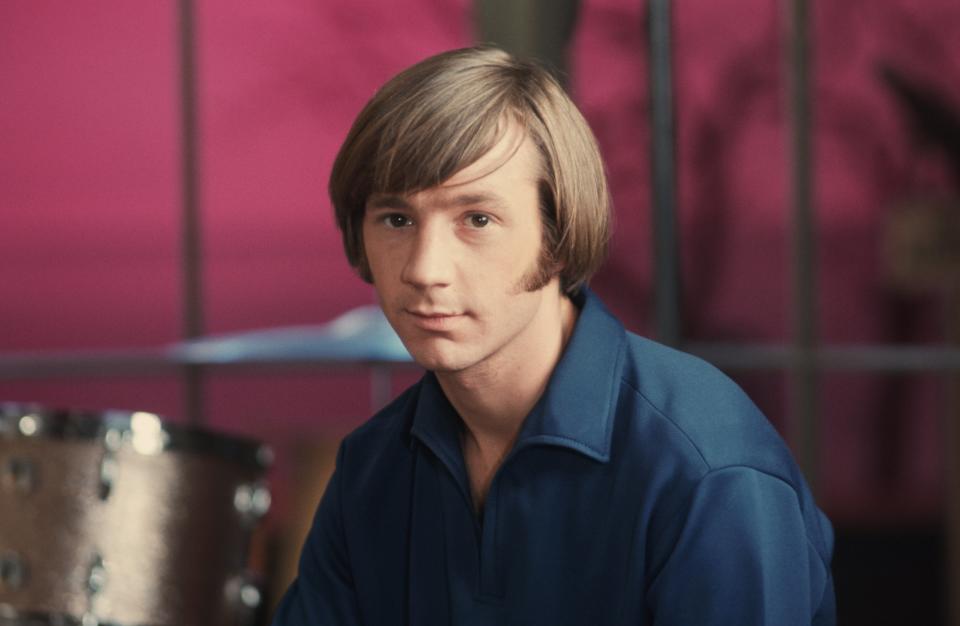The Monkees’ Peter Tork dies at age 77
Peter Tork, the endearingly goofy musician and actor who came to fame in the 1960s as a member of the Zeitgeist-capturing television rock band the Monkees, has passed away at age 77. While no cause of death has yet been confirmed, Tork was diagnosed with a rare form of tongue cancer, adenoid cystic carcinoma, in 2009.

The Monkees were often unfairly dismissed as a “Prefab Four” TV creation or boy band, and the creators of The Monkees series did not allow the group to play to play on their first two albums. But Tork, who often played the dopey buffoon on the show, actually came to The Monkees with a serious musical background. Born Peter Halsten Thorkelson in Washington, D.C., on Feb. 13, 1942, he started studying piano at age 9, eventually learning to play the guitar, bass and banjo, and he studied French horn at Carleton College in Minnesota before moving to New York City. There, he fell in with the bustling Greenwich Village folk music scene, hanging and playing with other rising musicians, like Stephen Stills. It was Stills, who had unsuccessfully auditioned for a new musical sitcom called The Monkees, who recommended Tork to the show’s producers in 1965. (Tork’s audition can be seen at the nine-minute mark in the video below.)
Many years later, Tork told Guitar World it was in Greenwich Village that he cultivated the “lovable dummy” image that made him so popular on the series. “They actually chose me and then said, ‘Do you mind playing the dummy?’ … I had developed that character on the Greenwich Village stages when I was [pretending to be] a basket-passing, coffeehouse folk singer in the early ’20s. One of the reasons I was able to play that character so well was that I’d been working on it for quite a while.”
Tork was 24 when The Monkees premiered on NBC in 1966. Though it ran for only two seasons, it became an instant smash, winning two Emmy Awards, shifting 35 million in record sales, and earning the group, which also included musician Mike Nesmith and child actors Davy Jones and Micky Dolenz, five top 10 albums (four of which went to No. 1) and six top 10 hits. Critical respect eluded the band at first (they still have never even been nominated for the Rock and Roll Hall of Fame), and according to an interview with CBS News, Tork was “mortified” when he entered the recording studio to work on the band’s 1966 debut album, only to be turned away by the show’s appointed music producer, Don Kirshner. “They were doing ‘[Last Train to] Clarksville,’ and I wrote a counterpoint, I had studied music. And I brought it to them, and they said: ‘No, no, Peter, you don’t understand. This is the record. It’s all done. We don’t need you,’” he said. However, Tork did eventually co-write one of The Monkees’ most recognizable hits, “For Pete’s Sake,” which served as the closing theme for Season 2.
Tork and his bandmates wrested creative control for their breakthrough third album, 1967’s Headquarters, which featured two co-writes by Tork, and they began touring internationally, even bringing Tim Buckley and Jimi Hendrix out as their opening acts on some dates. After The Monkees went off the air in 1968, the band continued to eschew their teeny-bopper image, with the bizarre and ahead-of-its-time feature film Head. However, while that adventurous project helped usher in the New Hollywood age of cinema and even kick-started the career of a young Jack Nicholson, who wrote the script, it largely confused and alienated the Monkees’ fanbase. It was during this time that Tork was involved in another psychedelic musical movie, playing banjo on George Harrison’s soundtrack to the 1968 film Wonderwall.
Tork’s post-Monkees solo career floundered in the ’70s, as he struggled with addiction (eventually getting sober in the early ’80s), but he was never forgotten, thanks to a steady, syndicated stream of Monkees reruns during that decade. And when MTV ran a Monkees marathon in 1986 to celebrate the group’s 20th anniversary, it was a surprising success, introduced the Monkees to a whole new generation and led to a massive reunion tour with Tork, Dolenz and Jones. The group sporadically reunited throughout the years, releasing the albums Pool It! (1987), Justus (in 1996, featuring the return of Nesmith), and the 50th anniversary comeback Good Times! in 2016. The latter featured contributions from Weezer’s Rivers Cuomo, XTC’s Andy Partridge, Oasis’s Noel Gallagher and Adam Schlesinger from Fountains of Wayne, and garnered major critical acclaim. Another reunion tour in fall 2016, led by Dolenz and Tork, with Nesmith joining for occasional dates, ensued. Tork also appeared on a new Monkees holiday album, Christmas Party, last year, and continued to play with his own band, Shoe Suede Blues.
Tork is the second member of the Monkees to pass away, following Davy Jones’s death in 2012. Nesmith underwent quadruple-bypass heart surgery and was hospitalized for over a month last year, but he has since resumed touring with Dolenz as “The Mike & Micky Show.” Tork is survived by his wife, Pamela Grapes; his children, Hallie, Ivan and Erica; and two siblings.
There are no words right now…heart broken over the loss of my Monkee brother, Peter Tork. #petertork #themonkees @TorkTweet pic.twitter.com/C8SwoA8pEV
— Micky Dolenz (@TheMickyDolenz1) February 21, 2019
Read more from Yahoo Entertainment:
Follow Lyndsey on Facebook, Twitter, Instagram, Amazon, Tumblr, Spotify.
